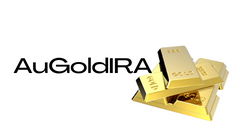Exploring new horizons in corporate finance, inflation stands as an unwavering nemesis, always looming. It's the force we brace against but never truly elude. Every financial blueprint, investment doctrine, and fiscal roadmap inevitably grapples with its impact. However, the methodology of gauging inflation remains largely unchallenged.
Rethinking Inflation Measurement: Enter Bitcoin CPI
Traditionally, the Consumer Price Index (CPI) reigns as the universal barometer of inflation, tracking price shifts of a predefined basket of goods in fiat currency. The predicament lies in fiat currencies' inherent devaluation, portraying escalating prices with a diminishing yardstick.
A Paradigm Shift: Bitcoin Enters the Arena
Samara Asset Group, a prominent member of Bitcoin For Corporations (BFC), is disrupting the status quo. Introducing the world's premier Bitcoin Consumer Price Index (BTCCPI), they've pioneered a groundbreaking benchmark that evaluates the identical CPI basket using Bitcoin instead of fiat. This subtle alteration carries profound implications: Bitcoin transcends being merely an asset to potentially emerge as a superior value metric.
A Stable Measure of Value
Imagine CPI as a thermometer—where the mercury ascends not solely due to heightened temperature, but because the measuring scale is flawed. Unlike traditional CPI, which invariably ascends, not necessarily due to goods appreciating but owing to fiat's purchasing power erosion from inflationary policies.
Unveiling the Reality Behind the Numbers
By denoting the same CPI basket in Bitcoin, the index mirrors the scenario when juxtaposed against a capped-supply, non-sovereign monetary standard. The revelation is profound: prices showcase a downward trajectory over extended periods.
- Bitcoin's volatility, reframed: Short-term price fluctuations notwithstanding, Bitcoin remarkably retains purchasing power compared to fiat over extended durations.
- Beyond inflation redefinition: A more transparent means to ascertain if capital sustains its value or silently withers away.
Implications for Corporate Treasuries
Corporate financial teams focus on performance, preservation, and predictability, with preservation being the trickiest to quantify, notably in fiat terms.
A New Yardstick for Corporate Finance
The BTCCPI presents a novel tool to an emerging group of Bitcoin Treasury Companies, enabling them to benchmark the tangible efficacy of their treasury strategies.
- Shifting the narrative: Holding Bitcoin isn't mere speculation but aligning capital with a structurally deflationary monetary system.
- Empowering shareholder communication: Portraying treasury as not merely enduring inflation but combating it by securing corporate value to a global, impartial, unassailable foundation.
Samara's Trailblazing Initiative
In a realm where many discuss inflation, Samara has redefined the dialogue by introducing a novel yardstick.
Leading by Example
Samara's BTCCPI isn't theoretical; it's a live, data-driven benchmark—transparent, methodologically sound, and accessible to all.
- Setting new standards: Showcasing how a Bitcoin-centric entity can enhance the corporate financial landscape by offering tools that benefit investors, treasurers, analysts, and decision-makers universally.
- Signaling a shift: Bitcoin is evolving from a defensive stance to constructing a new order—with fresh metrics, mechanisms, and authenticity standards.
Pioneering Honest Capital Evaluation
Traditionally, CFOs rely on established benchmarks like CPI, LIBOR, and S&P, all rooted in fiat-centric paradigms.
Embracing a New Norm
Bitcoin presents a paradigm shift—a monetary system with fixed supply, transparent issuance, and immune to policy or political influence.
- BTCCPI's role: Using Bitcoin not just as a ledger but as a lens to perceive inflation and honest capital evaluation.
- Redefining Benchmarks: Questioning the accuracy of our existing inflation metrics and proposing a superior benchmark for honest capital assessment.
Thanks to Samara's innovative stride, we embark on a journey towards a more transparent, resilient financial realm.
Frequently Asked Questions
How much should precious metals make up your portfolio?
To answer this question, we must first understand what precious metals are. Precious metals refer to elements with a very high value relative other commodities. This makes them valuable in investment and trading. Today, gold is the most commonly traded precious metal.
But, there are other types of precious metals available, including platinum and silver. The price of gold tends to fluctuate but generally stays at a reasonably stable level during periods of economic turmoil. It also remains relatively unaffected by inflation and deflation.
The general trend is for precious metals to increase in price with the overall market. That said, they do not always move in lockstep with each other. When the economy is in trouble, for example, gold prices tend to rise while other precious metals fall. This is because investors expect lower rates of interest, which makes bonds less attractive investments.
Contrary to this, when the economy performs well, the opposite happens. Investors prefer safe assets such as Treasury Bonds and demand fewer precious metals. Since these are scarce, they become more expensive and decrease in value.
To maximize your profits when investing in precious metals, diversify across different precious metals. It is also a good idea to diversify your investments in precious metals, as prices tend to fluctuate.
What is a Precious Metal IRA?
You can diversify your retirement savings by investing in precious metal IRAs. This allows you to invest in gold, silver and platinum as well as iridium, osmium and other rare metals. These metals are known as “precious” because they are rare and extremely valuable. These are good investments for your cash and will help you protect yourself from economic instability and inflation.
Precious metals often refer to themselves as “bullion.” Bullion is the physical metal.
Bullion can be bought through many channels, including online retailers, large coins dealers, and some grocery shops.
With a precious metal IRA, you invest in bullion directly rather than purchasing shares of stock. This means you'll receive dividends every year.
Precious metal IRAs have no paperwork or annual fees. Instead, you only pay a small percentage on your gains. Plus, you get free access to your funds whenever you want.
Can I have physical gold in my IRA
Gold is money and not just paper currency. People have been using gold for thousands of years to store their wealth and protect it from economic instability and inflation. Today, investors use gold as part of a diversified portfolio because gold tends to do better during financial turmoil.
Today, Americans prefer precious metals like silver and gold to stocks and bonds. Even though owning gold is not a guarantee of making money, there are many reasons why you might want to add gold to your retirement savings portfolio.
One reason is that gold has historically performed better than other assets during periods of financial panic. Between August 2011 and early 2013 gold prices soared nearly 100 percent, while the S&P 500 plunged 21 percent. During turbulent market conditions gold was one of few assets that outperformed stock prices.
Another benefit to investing in gold? It has virtually zero counterparty exposure. You still have your shares even if your stock portfolio falls. However, if you have gold, your value will rise even if the company that you invested in defaults on its loans.
Finally, gold is liquid. This means that you can sell gold anytime, regardless of whether or not another buyer is available. The liquidity of gold makes it a good investment. This allows for you to benefit from the short-term fluctuations of the gold market.
How much should I contribute to my Roth IRA account?
Roth IRAs allow you to deposit your money tax-free. These accounts cannot be withdrawn until you turn 59 1/2. There are some rules that you need to keep in mind if you want to withdraw funds from these accounts before you reach 59 1/2. First, your principal (the deposit amount originally made) is not transferable. You cannot withdraw more than the original amount you contributed. You must pay taxes on the difference if you want to take out more than what you initially contributed.
The second rule says that you cannot withdraw your earnings without paying income tax. You will pay income taxes when you withdraw your earnings. For example, let's say that you contribute $5,000 to your Roth IRA every year. In addition, let's assume you earn $10,000 per year after contributing. Federal income taxes would apply to the earnings. You would be responsible for $3500 So you would only have $6,500 left. This is the maximum amount you can withdraw because you are limited to what you initially contributed.
If you took $4,000 from your earnings, you would still owe taxes for the $1,500 remaining. You would also lose half of your earnings because they are subject to another 50% tax (half off 40%). You only got back $4,000. Even though you were able to withdraw $7,000 from your Roth IRA,
There are two types if Roth IRAs, Roth and Traditional. Traditional IRAs allow you to deduct pretax contributions from your taxable income. You can withdraw your contributions plus interest from your traditional IRA when you retire. You have the option to withdraw any amount from a traditional IRA.
Roth IRAs do not allow you to deduct your contributions. However, once you retire, you can withdraw your entire contribution plus accrued interest. There is no minimum withdrawal amount, unlike traditional IRAs. You don't have to wait until you turn 70 1/2 years old before withdrawing your contribution.
Can I buy or sell gold from my self-directed IRA
While you can purchase gold from your self-directed IRA (or any other brokerage firm), you must first open a brokerage account such as TD Ameritrade. Transfer funds from an existing retirement account are also possible.
The IRS allows individuals contributing up to $5.500 each ($6,500 if married, filing jointly) into a traditional IRA. Individuals are allowed to contribute $1,000 each ($2,000 if married or filing jointly) to a Roth IRA.
You should consider buying physical gold bullion if you decide to invest in it. Futures contracts, which are financial instruments based upon the price of gold, are financial instruments. You can speculate on future prices, but not own the metal. But, physical bullion is real bars of gold or silver that you can hold in one's hand.
How does a gold IRA work?
Individuals who want to invest with precious metals may use the Gold Ira accounts, which are tax-free.
Physical gold bullion coin can be purchased at any time. You don't have to wait until retirement to start investing in gold.
An IRA allows you to keep your gold forever. Your gold holdings won't be subject to taxes when you pass away.
Your heirs will inherit your gold, and not pay capital gains taxes. You don't need to include your gold in your final estate report, as it isn't part of the estate.
To open a IRA for gold, you must first create an individual retirement plan (IRA). Once you've done that, you'll receive an IRA custody. This company acts as a mediator between you, the IRS.
Your gold IRA custodian is responsible for handling all paperwork and submitting the required forms to the IRS. This includes filing annual reporting.
After you have created your gold IRA, the only thing you need to do is purchase gold bullion. Minimum deposit is $1,000 If you make more, however, you will get a higher interest rate.
Taxes will apply to gold that you take out of an IRA. If you take out the whole amount, you'll be subject to income taxes as well as a 10 percent penalty.
If you only take out a very small percentage of your income, you may not need to pay tax. There are exceptions. If you take out 30% of your total IRA assets or more, you will owe federal income taxes and a 20 percent penalty.
You should avoid taking out more than 50% of your total IRA assets yearly. Otherwise, you'll face steep financial consequences.
Statistics
- Contribution limits$6,000 (49 and under) $7,000 (50 and up)$6,000 (49 and under) $7,000 (50 and up)$58,000 or 25% of your annual compensation (whichever is smaller) (lendedu.com)
- The price of gold jumped 131 percent from late 2007 to September 2011, when it hit a high of $1,921 an ounce, according to the World Gold Council. (aarp.org)
- If you accidentally make an improper transaction, the IRS will disallow it and count it as a withdrawal, so you would owe income tax on the item's value and, if you are younger than 59 ½, an additional 10% early withdrawal penalty. (forbes.com)
- (Basically, if your GDP grows by 2%, you need miners to dig 2% more gold out of the ground every year to keep prices steady.) (smartasset.com)
- Gold is considered a collectible, and profits from a sale are taxed at a maximum rate of 28 percent. (aarp.org)
External Links
bbb.org
wsj.com
- Saddam Hussein's Invasion Helped Uncage a Bear In 1990 – WSJ
- How do you keep your IRA Gold at Home? It's not legal – WSJ
irs.gov
investopedia.com
How To
Investing in gold or stocks
It might seem risky to invest in gold as an investment vehicle these days. This is because most people believe that it is no longer economically profitable to invest gold. This belief stems from the fact that most people see gold prices being driven down by the global economy. They believe they would lose their money if they invested gold. However, investing in gold can still provide significant benefits. We'll be looking at some of these benefits below.
Gold is the oldest known form of currency. It has been used for thousands of years. It was used all around the world as a reserve of value. It is still used as a payment method by South Africa and other countries.
It is important to determine the price per Gram that you will pay for gold when making a decision about whether or not to invest. The first thing you should do when considering buying gold bullion is to decide how much you will spend per gram. If you don't know your current market rate, you could always contact a local jeweler and ask them what they think the price is.
It's worth noting, however, that while gold prices have fallen recently the cost of producing gold is on the rise. So while the price of gold has declined, production costs haven't changed.
Another thing to remember when thinking about whether or not you should buy gold is the amount of gold you plan on purchasing. If you intend to only purchase enough gold to cover your wedding rings it may be a smart decision to not buy any gold. If you plan to do so as long-term investments, it is worth looking into. You can profit if you sell your gold at a higher price than you bought it.
We hope that this article has helped you gain a better understanding and appreciation for gold as an investment option. It is important to research all options before you make any decision. Only then can informed decisions be made.
—————————————————————————————————————————————————————————————-
Based on [POSTTITLE]
by [POSTAUTHOR]



















